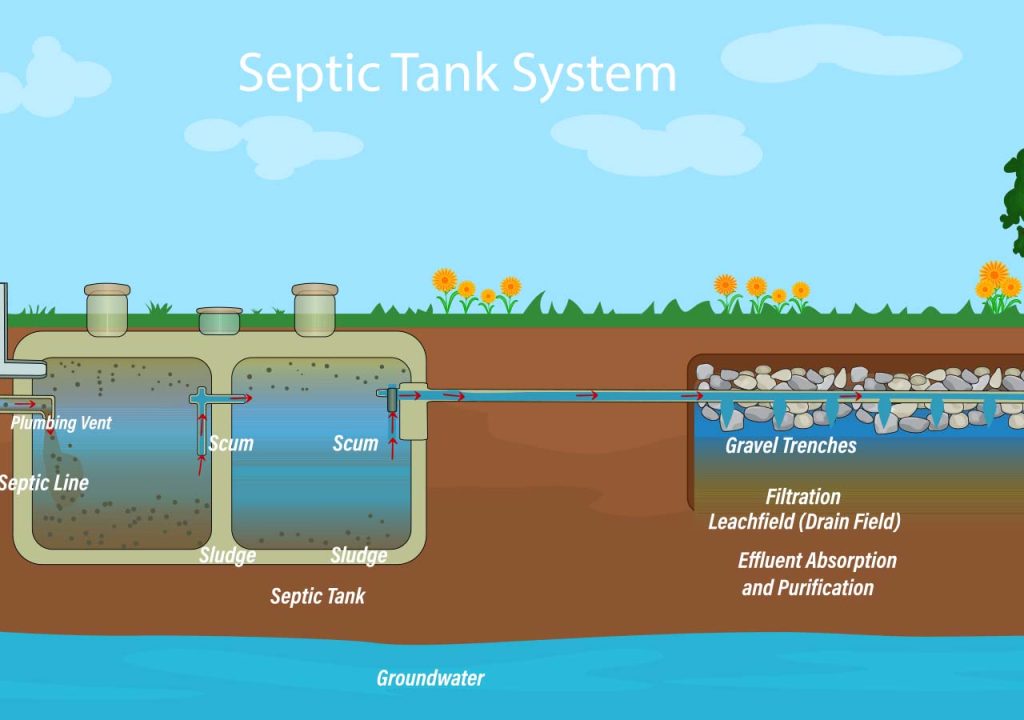Why do you need a septic tank drainage field?
Septic tanks are perfect for getting rid of wastewater from your home. They are clever too, by using biological enzymes to clean the waste water before releasing it back into the environment. The key thing here is how this water is released, and that’s where a septic tank drainage field comes into the picture.
Understanding drainage fields
Also known as leach fields, these drain fields perform an important job of allowing the wastewater from septic tanks to be filtered before reaching the waterway which includes rivers and streams. This waste water is not allowed to enter rivers directly. That’s because there is still some filtering to take place before it is clean enough. By allowing the water to gradually filter through the soil, impurities are taken out before it reaches the waterway.
A septic tank drainage field is an essential component of a septic system. It is a network of perforated pipes laid in trenches filled with gravel or other porous materials. It distributes the liquid waste over a stretch of land.
When planning a septic tank installation, we can come and perform a percolation test. This is important because the land you want your drainage field on needs to be able to allow water to drain away not too fast and not too slow.

Water has to go somewhere
The drainage field plays a vital role in ensuring the overall effectiveness and longevity of your septic system. That’s because it is responsible for the final stage of wastewater treatment. As the waste water percolates through the soil, it undergoes natural filtration, removing harmful bacteria. This also stops the septic tank from overflowing, which can lead to burst pipes, nasty smells and a costly repair bill.
By properly treating and dispersing wastewater, a septic tank drainage field helps protect the surrounding environment. It prevents contaminants from entering local water sources, which can harm wildlife and ecosystems.
Keep an eye on your drainage field
Keeping an eye on your drainage field is important. Over time, the perforated pipes in the drainage field can become clogged with solid waste, grease, or other debris. This clogging prevents the effluent from dispersing properly, leading to backups and system failure. Regular maintenance can ensure the pipes continue to work properly for many years.
We also recommend that you do not use the soil for other purposes, such as car parking or growing plants. That’s because the soil can be compacted under the wheels or roots, making it difficult for water to flow out unhindered and harder to absorb the bad bacteria.
A properly installed and maintained septic tank drainage field is essential for the effective and safe management of wastewater. By planning the location wisely and keeping it free from obstruction and compaction, it can mean fewer problems face the longevity of your tank. Your septic tank drainage field is such an important aspect of your wastewater system. If you have any questions or problems with yours, then just give us a shout.
